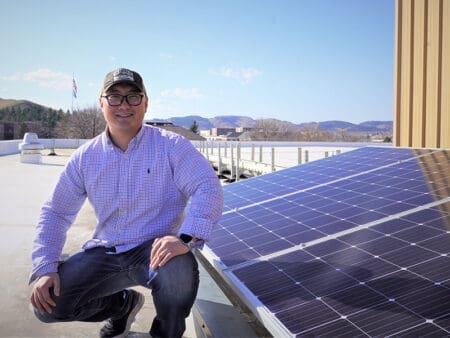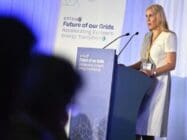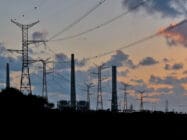
South Dakota Mines university professor Long Zhao has secured a grant to study human behaviour patterns for incorporation in the next-generation smart grid.
The human factor, when it comes to the use of distributed generation such as rooftop solar and its delivery to the grid is one of the biggest challenges when it comes to the modern grid.
Zhao, who directs Mines’ Smart Grid and Energy Research Lab, intends to study this human factor and this in turn could be incorporated so that the grid could predict how it will then be used by the humans.
Zhao says that while there is a great deal of effort underway right now to build the technology and infrastructure needed to run smart grids, the one thing missing from current research is the human factor.
Have you read?
Smart grids and digitalisation – more effort needed says IEA
For Enedis collective self-consumption is key to energy sharing
“The most important part of the equation is people, and we are trying to understand human behaviour to help build the most robust and fully functional smart grid models.”
The grant from the National Science Foundation is worth almost $200,000 over the next two years.
Specifically the intention is to introduce a data-driven approach to analyse and explicitly model power demand behaviour at the household level using real-world long-term data.
The goal is to reveal macro- and micro-residential power demand patterns, through matching 15-minute resolution smart meter data with consumer surveys, along with local parcel data and meteorological data, to achieve a comprehensive understanding of residential power demand behaviour at a disaggregated level.
This should then lay the foundation for research focused on data-driven analysis and modelling for next-generation power grids.
The primary contribution of the project is intended to be the development of a data-driven temperature-time-day-based model for residential power demand behaviour, relying solely on real-world data.
Zhao anticipates that the research also should have wider impacts, with the proposed model potentially readily expanded to other domains such as water usage.
It also should contribute to better understanding incentive effectiveness in changing consumer behaviour, particularly in green consumption.
Alongside the project a new ‘Smart Grid and Data Science’ curriculum will be developed, combining power engineering and social science.
Partners in the project include the local coop West River Electric Association and the chamber of commerce Elevate Rapid City.
Smoke impact on solar PV
The new project comes as Zhao has just completed another study on the impact of wildfire smoke on solar PV.
While solar energy production is likely to be impacted by low-level smoke, the project found that the output of individual solar panels can be reduced by nearly 50%, even when the smoke is present at high altitudes and air quality near the ground is not significantly impacted.
Moreover, the fluctuations vary with the intensity of the smoke, which often varies, indicating the importance of taking this into account as solar becomes more widespread in wildfire-prone areas and beyond given the propensity for the smoke to potentially travel large distances in the air.








